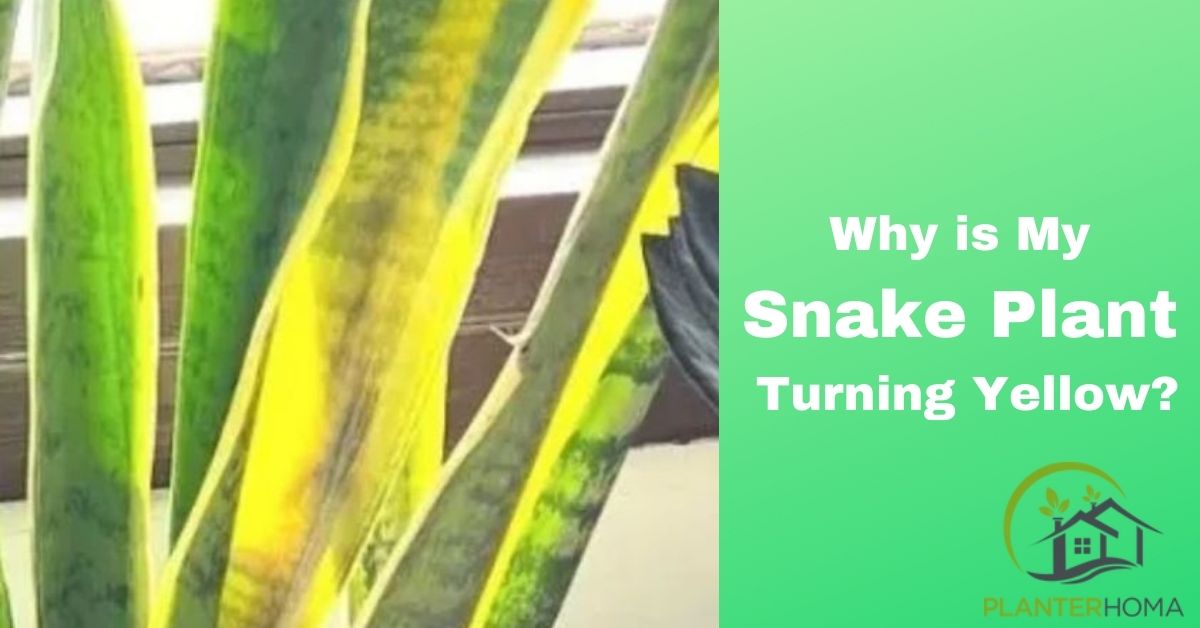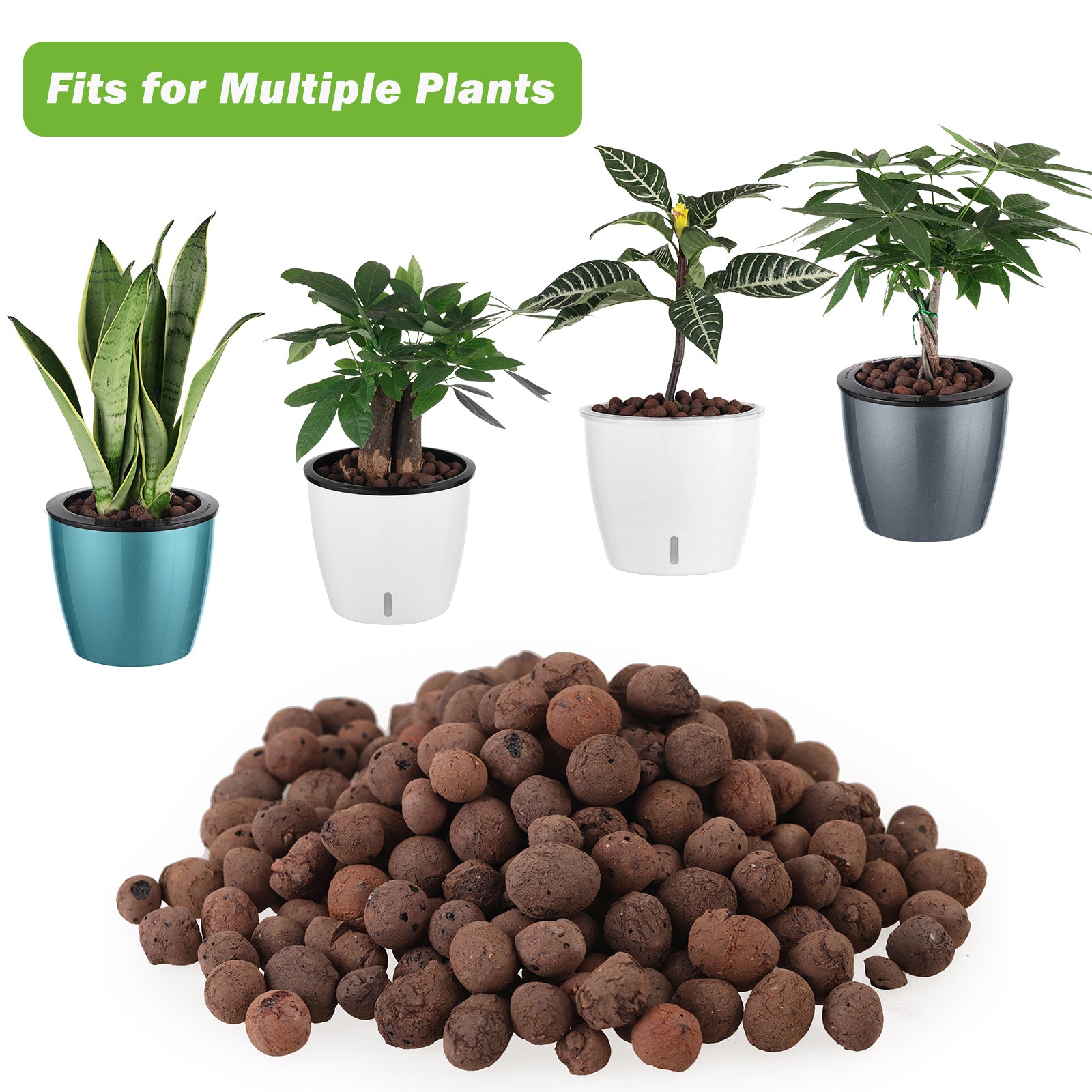Why is My Snake Plant Turning Yellow | How Do You Save Yellowing Snake Plant
The snake plant is a cool houseplant. The snake plant is one of those plants that are great for growing indoors in a terrarium, Snake plants can grow quite large, but they also tend to be pretty low-maintenance. That doesn't mean you shouldn't pay attention to their appearance.
Suppose your snake plant turns yellow at the bottom due to a lack of nutrients or other problems.
Overwatering is still the most likely cause of yellowing leaves, a self-watering planter can potentially help prevent yellowing leaves in a snake plant.
It may be time to intervene. Here are some ways to get your snake plant to look great again. This article will help you identify what's going on with your plant and how to fix it.
Why is My Snake Plant Turning Yellow?

It is common to see yellow on the edges of snake plants' broad, vertical leaf blades in good health. Shades of yellow on the leaf blades indicate plant stress when visible across the entire surface; several factors can cause plant stress.
There are a few reasons why your Snake Plant leaves are turning yellow:
Overwatering Can Cause Yellow Leaves in Snake Plant:
Succulent snake plants readily absorb water from the soil and store it in their leaves. When the soil is overwatered, the plant cells absorb more water than they can store. Read here to Fix Overwatered Snake Plant

Leaves become soggy and yellow as they absorb more water. Drooping snake plant leaves are caused by soaked-up leaf cells losing their firmness.
You may notice that your snake plant will become black or brown if the yellow patches are not corrected by correcting overwatering.
Remove the snake plant from its pot and inspect the roots to see if they are soggy and smell foul. Sansevieria usually exhibits root rot and leaf yellowing simultaneously.
Water-retaining compact soil
You can cause yellowing on your snake plant. Sansevieria takes in more water than it needs when the soil is compact and retains water for too long.
You may still see signs of overwatering despite properly spacing out irrigation schedules due to poorly draining soil.
A potting soil mix containing compost and sphagnum peat is an excellent example of slow-draining soil that could trigger this problem. A growing pot can also cause leaf yellowing without drainage holes at the bottom.
Low Temperature
Plants native to arid and semi-arid regions include Sansevieria trifasciata. Temperatures between 70 and 90 degrees Fahrenheit are ideal for them.
During periods of low temperatures, the plant leaves yellow due to stress. Due to extremely low temperatures, indoor snake plants kept near cold, drafty windows will yellow quickly.
An iron deficiency in the soil
Mineral imbalances within plant cells can also cause the yellowing of snake plants. As a result, the soil in which snake plants grow becomes depleted of essential minerals, such as iron.
Chlorosis is a condition characterized by pale yellow leaves resulting from a mineral deficiency in the Sansevieria trifasciata plant.
Fungi that cause root rot
Fusarium and Pythium thrive in soggy soil conditions, as do various soil-borne fungi and pseudo-fungal organisms. Snake plants' roots rot due to these pests, negatively affecting nutrient and water absorption.
Leaf discoloration and yellow spots appear on the leaf blades of snake plants due to moisture and nutrient deficiency.
Check the roots of your Sensivieria plant to determine if root rot fungi are causing yellow leaves. The roots of rotting snake plants are soft, soggy, and smell foul.
Related:
How to Care Snake Plant In 2022
What is the Best Pot for Snake Plant?
How Fast Do Snake Plants Grow?
Can Snake Plants Live Outside?
Direct or bright sunlight overexposure
A long period of direct sunlight can also discolor the leaves of Sansevieria trifasciata. Snake plant leaves turn pale-yellow during the summer when the scorching sun's rays scorch them.
Too much heat will cause the mother-in-law's tongue's leaves to curl and wrinkle. Sunlight fades snake plant leaf variegation and natural patterning. If photodamage is the problem, only the leaves facing the window will turn yellow.
Overfertilizing in winter
When soil is overly fertilized and nutrient-rich, roots are more likely to burn. The mother-in-law's tongue plant becomes stressed and spots yellow leaves due to a lack of water and essential nutrients.
Snake plants are also sensitive to freezing temperatures when there is a high concentration of nutrients in the soil.
It is, therefore, more likely that your plant will spot yellow patches on its leaves if you overfeed it with fertilizer during winter.
The leaves of snake plants are also vulnerable to yellowing when overfed, especially if the roots are fragile.
How do you Save Yellowing Snake Plant?
Repotting your yellowing snake plant with a well-draining soil mix, watering only when the soil dries out, and providing optimal temperature and light conditions can save it.

To save and revive your snake plant turning yellowing, provide an iron supplement and drain excess salts from the soil.
The following steps will help you save a snake plant turning yellow and crispy:
When the soil dries, water it
To stop yellowing caused by overwatering, stop irrigating the snake plant until the soil completely dries out. Do not water more than once a week. Water your snake plant only when the top two inches of soil feel dry.
While waiting for the water to drain, water your snake plant early in the morning if your soil is slow-draining. The high temperatures and sunlight during the day will boost drainage rates.
Put the plant in a pot with fast-draining soil
To ensure proper drainage, use a growing pot with drainage holes at the base and a fast-draining soil mix. A soil mix containing perlite and coarse sand is best for fast drainage.
If your snake plant has rotten roots or yellow leaves, prune them off before you report it in a new soil mix.
Likewise, if you're growing your snake plant in your garden, spread coarse sand over your soil to help it drain better before raking away any mulching present.
Maintain a temperature of 70-90°F
Temperatures should not exceed 70-90 degrees Fahrenheit in greenhouses where you are growing Sansevieria.
Meanwhile, keep indoor snake plants out of cold draft-prone areas. Keeping them away from windows, doors, and AC vents is one way to accomplish this.
Using window drapes will filter direct sunlight
Install window drapes to provide bright but indirect sunlight to your indoor snake plants. In the meantime, plant a taller shrub/tree near snake plants that are yellowing due to overexposure to sunlight.
Use cactus soil mix for repotting
Using succulent/cactus soil mix will help you alleviate yellowing snake plant leaves caused by mineral deficiencies in the soil. To prevent chlorosis, Sansevieria trifasciata requires potting soil mixes formulated with minerals.
Make sure the soil is drained of excess salts
Snake plants require more nutrients when temperatures are high during the growing season.
Fertilize after winter has passed, when temperatures are low, and soil salts are more sensitive to excess fertilizer. Lightly water the snake plant's soil mix if you've already made this mistake.
Should yellow leaves be removed from snake plants?

Your snake plant's yellow leaves can be removed by cutting off the yellow tips. The pruned leaves should grow longer if they are watered properly and have optimal light and temperature conditions.
It is important to remember that the pointed tips will not regrow, causing them to stand out from the rest of the leaves.
If you think the yellow edges are an aesthetic problem, consider pruning them off into pointed tips.
It won't take long for the leaves to regrow and grow like the healthy leaves around them. Alternately, you can remove affected leaves from the base of the plant.
Final words
The snake plant turning yellow indicates that it's getting too much or too little light or nutrients. The key message is to allow the snake plant time to recover.
While it may have been an innocent error, yellow leaves can happen when a plant has been exposed to too much sunlight earlier in its growth. Remember that the snake plant will always look better if you care properly.
FAQS
What do I do when my snake plant turns yellow?
A yellowing snake plant can be treated by repotting it into a fast-draining soil mix, keeping temperatures between 70-90 °F, and watering only when the top two inches of soil feel dry.
Snake plants turn yellow due to overwatering, poor drainage, mineral imbalance, and low temperatures.
What does an Overwatered snake plant look like?
An overwatered snake plant will show symptoms such as drooping leaves, yellow leaves, and falling over.
Read More About Leaves Prole of Other Plants
Brown Spots On Monstera Leaves
Why Are the Bird of Paradise Leaves Curling
Why My ZZ Plant Leaves Turning Yellow?
African Violet leaves drooping
Why is My Jade Plant Dropping Leaves?
African Violet Leaves Turning Brown
African Violet Leaves Problems
How to Fix Your Spider Plant Leaves Yellow
*Disclosure: This post may contain affiliate links. As an Amazon Associate I earn from qualifying purchases.
















Leave a comment